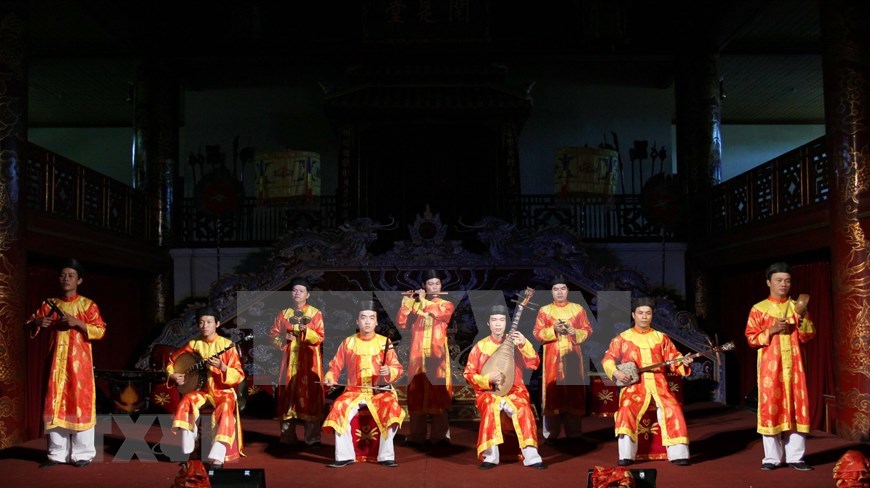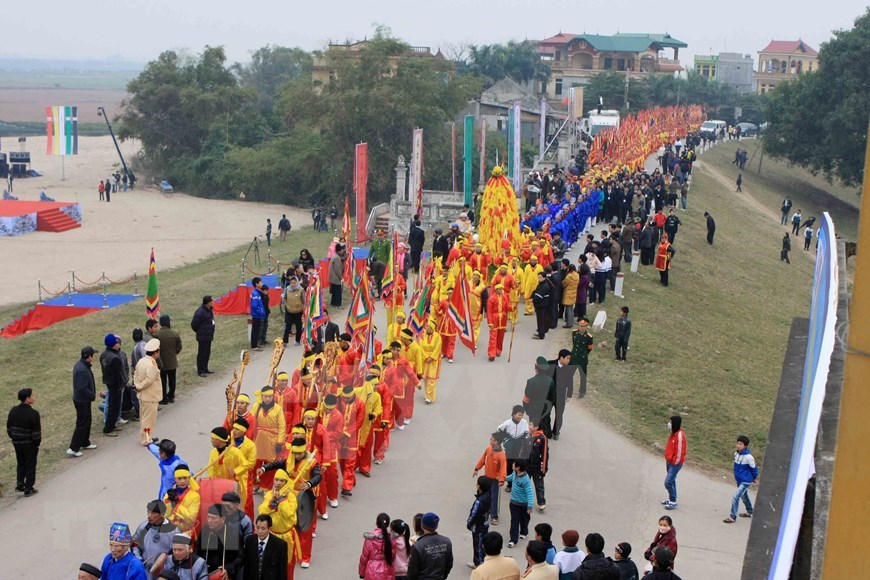-

Xoan singing is a religious practice rooted in the ancestor worship of the Vietnamese people (Photo: VNA)
-

The Vietnamese musical tradition was removed from the 2011 UNESCO List of Intangible Cultural Heritage in Need of Urgent Safeguarding and became an intangible cultural heritage of humanity in 2017 (Photo: VNA)
-

Quan ho (love-duet singing) is an art form that combines various elements, including music, lyrics and costumes, and features the distinctive culture of people in the region formerly called Kinh Bac (Photo: VNA)
-

The art of love duets was inscribed in the UNESCO’s representative list of intangible cultural heritage in September 2009 (Photo: VNA)
-

Quan ho was inscribed in the UNESCO’s representative list of intangible cultural heritage in September 2009 (Photo: VNA)
-

Cheo (traditional opera) originated in the 10th century from folk music and dance traditions, especially tro nhai – simple mimetic skits. These skits showed the lives of ordinary people as well as royalty. Over time, writers consolidated cheo short stories based on these skits into longer plays (Photo: VNA)
-

Ca Tru was included in the UNESCO list of World Intangible Cultural Heritage in Need of Urgent Safeguarding in 2009. It is one of the most unique genres of folk music of Vietnam (Photo: VNA)
-

Ca Tru features a female singer accompanied by a small group of musicians. The art genre appeared in the north around the 15th century and thrived until the early 20th century (Photo: VNA)
-

“Xam” is a centuries-old singing style of the Vietnamese people. It was popular in the northern region and has long been recognised as an important part of national cultural heritage (Photo: VNA)
-

Hue Court Music plays an important role and is the core of the court affairs (Photo: VNA)
-

In Nov 2003 Hue Court Music was recognized as the oral and intangible heritage of humanity by UNESCO (Photo: VNA)
-

This recognition remarked the great progress of the culture preservation of Vietnam and its importance to the humanity’s art values (Photo: VNA)
-

Vietnam’s Giong festival was recognised by UNESCO as Intangible Cultural Heritage of Humanity in 2010 (Photo: VNA)
-

The festival is held annually between the seventh and ninth day of the fourth lunar month to commemorate Saint Giong, a local hero who sacrificed his life to defeat invaders (Photo: VNA)
-

A gong performance by Muong ethnic group. Gong art form of Muong has been recognized as national heritage (Photo: VNA)
-

The Complex of Hue Monuments was recognised by UNESCO as a site of world cultural heritage in 1993 (Photo: VNA)
-

The Complex of Hue Monuments was recognised by UNESCO as a site of world cultural heritage in 1993 (Photo: VNA)
Vietnam’s unique cultural heritage
November 23 is Vietnam’s Cultural Heritage Day which aims to promote and honour the values of unique cultural heritage elements of Vietnam.



